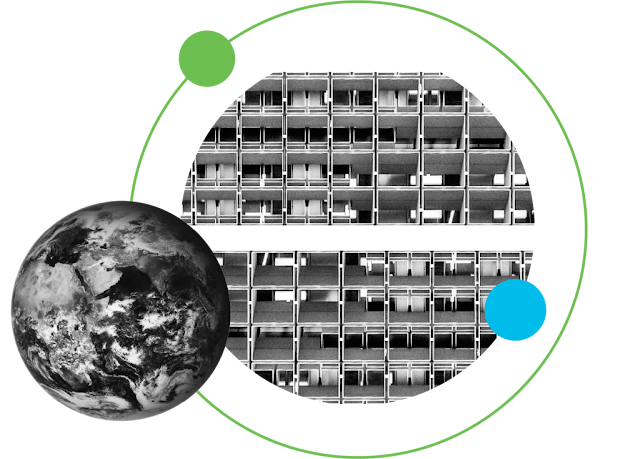Most organizations today take advantage of cloud services. From software as a service (SaaS) to infrastructure as a service (IaaS), these cost-effective solutions help accelerate business and offer new opportunities for innovation.
Within the Cisco network, we’ve seen an impact from changing traffic patterns as our clients adopt to Cloud Services. We see more and more traffic going to the Internet and cloud services, and this level of traffic is growing at a very fast rate. This change meant we saw a 200 percent increase in peak Internet and cloud traffic within just 12 months. During that time, growth across our internal, private enterprise backbone also rose steadily, primarily due to large transfers between data centers. We quickly realized the traditional enterprise network is not ready to deliver the scale and resiliency needed to support this drastic shift in traffic patterns.
Technologies such as cloud, bring your own device (BYOD), and Internet of Things (IoT) require us to think differently about security. The enterprise network is becoming more segmented and each segment has different connectivity and security needs. Previously, the private backbone was a single, flat network; it now needs to deliver multi-tenancy and the ability to extend security segments across the globe.
These challenges have put us on an evolutionary path from a traditional enterprise backbone design to a software-defined and cloud-ready backbone. (Figure 1)
Within the Cisco network, we’ve seen an impact from changing traffic patterns as our clients adopt to Cloud Services. We see more and more traffic going to the Internet and cloud services, and this level of traffic is growing at a very fast rate. This change meant we saw a 200 percent increase in peak Internet and cloud traffic within just 12 months. During that time, growth across our internal, private enterprise backbone also rose steadily, primarily due to large transfers between data centers. We quickly realized the traditional enterprise network is not ready to deliver the scale and resiliency needed to support this drastic shift in traffic patterns.
Technologies such as cloud, bring your own device (BYOD), and Internet of Things (IoT) require us to think differently about security. The enterprise network is becoming more segmented and each segment has different connectivity and security needs. Previously, the private backbone was a single, flat network; it now needs to deliver multi-tenancy and the ability to extend security segments across the globe.
These challenges have put us on an evolutionary path from a traditional enterprise backbone design to a software-defined and cloud-ready backbone. (Figure 1)
Figure 1. New software-defined design in the Cisco Cloud Backbone
From an enterprise-like backbone to a service-provider-like backbone
Cisco IT is deploying a new global backbone powered by Cisco ASR 9000 Series Aggregation Services Routers running Cisco IOS-XR software. This highly scalable and programmable platform provides a strong foundation for the new backbone and will allow us to operate more like a service provider for our internal clients.
Although our initial priority is to address Internet and backbone scalability challenges, we also need to offer more advanced services to support our users. For example, can you imagine a day, a few hours, or even a couple of minutes without access to the Internet and your business-critical SaaS apps? To avoid this potential disruption, our new backbone needs to deliver an always-on and excellent user experience. It needs to detect failure conditions and automatically steer traffic over resilient peering connections across the globe.
By more intelligently routing traffic over the new backbone and augmenting it with cheaper bandwidth, we hope to increase capacity without affecting our telecom budgets. By supporting multi-tenancy, the new backbone will be able to deliver customized services for each of our internal tenants and extend security zones globally.
From the beginning, we are taking a “no command line interface” approach, which will allow us to deploy and operate the new backbone through software. The goal of this approach is to translate the user’s intent and program it into the network within minutes instead of days.
Where Are We in our Journey?
Although standardization and simplification has always been top of mind for Cisco IT, over the 20 years of its existence our backbone has become a complex environment. This complexity makes the transition to a new backbone design a high-risk and cumbersome effort. Before using the new backbone design to deliver more advanced services, we know that it’s key to take the time to build a rock-solid foundation. This foundation work includes:
◉ Deploying Cisco ASR 9900 Series routers in 13 colocation facilities and Cisco campus buildings globally
◉ Addressing challenges of Internet route table growth
◉ Implementing a hierarchical Global Border Gateway Protocol (BGP) AS109 network
◉ Migrating existing tenants onto the new backbone
When the foundation work is completed, we will evaluate user needs in order to focus on deploying network capabilities that deliver the most business value.
Future objectives include improvements for:
◉ Delivering global network as a service
◉ Speed of delivery through programmability and automation
◉ Assurance through streaming telemetry
◉ Multi-tenancy and traffic steering through multiprotocol label switching (MPLS) and segment routing
IT needs to assure the enterprise backbone evolves to support internal business users. Cisco IT has started this transformation. Our users expect ordering IT network services to be as simple as shopping online. This new backbone will enable us to more efficiently connect our clients to Internet and SaaS applications, extend security zones globally, and interconnect sites, private clouds, and public clouds.
























